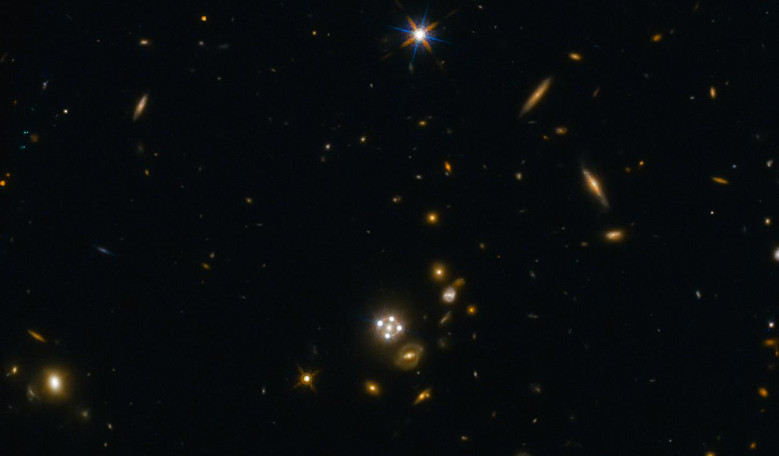The rate of the expansion of the Universe is a hotly debated subject and now a new measurement by the H0LiCOW collaboration using gravitationally-lensed quasars, contradicts that made using other methods and the discrepancy could hint at "new physics" beyond the standard model of cosmology, say the team.
The rate at which the Universe is expanding is known as the Hubble constant, H0, and it was named after the scientist – Edwin Hubble – who noticed in the 1920s, that galaxies farthest from Earth seemed to be moving faster. What he was actually observing was the expansion of the Universe. The rate of this expansion is determined by the current Standard Cosmological Model, "Lambda CDM", and it has in the past through the study of light from supernova explosions been calculated to be about 72 kilometres per second per megaparsec (a megaparsec is about 3.3 million light-years).
Nonetheless, even this method of using a limited number of supernovas as ‘standard candles’ to measure the rate was recently called in question, when a group of scientists suggested that the rate at which the Universe is expanding was not as fast as previously thought.
The other method in which to provide a measurement of the expansion rate is to use the cosmic microwave background (CMB), the "fossil radiation" or "afterglow" of the Big Bang. Using this data, the team behind the Planck mission formulated a different rate of expansion, however others state that these tests are indirect, and that the Planck measurement relies on some assumptions, for example that the universe is flat.
Tackling this problem from a different perspective is the H0LiCOW collaboration. Lead by Sherry Suyu at the Max Planck Institute for Astrophysics in Germany, Suyu and team have measured the Hubble constant by measuring light from distant quasars that is bent by massive galaxies stationed in the way of this light, as it heads towards Earth.
The technical term for this bending of light is known as ‘gravitationally lensing’ and galaxies that are used to bend light from a distant object can also produce several "lensed" images of the original objects, making them appear multiple times. In addition, the mass in these massive galaxies is not evenly distributed, therefore some areas of the galaxy bend or slow light down more than others. Using these two properties (mass and multiplicity) of strong gravitational lens systems, the team were able to calculate the Hubble Constant my measuring light from the distant quasar as it arrived at slightly different times depending on the route it had taken through the different lens.
"The Hubble constant is crucial for modern astronomy as it can help to confirm or refute whether our picture of the Universe – composed of dark energy, dark matter and normal matter – is actually correct, or if we are missing something fundamental," Suyu said.
The figure presented by the H0LiCOW team of the Hubble Constant is 71.9 ± 2.7 kilometres per second per megaparsec, and is accurate to 3.8 percent. This number is in close agreement with measurements by other astronomers based on observations of supernovae, but as noted above differs to that of recent supernova studies and to the figure derived from the CMB.
The H0LiCOW team plans to refine the constant by carrying out the same measurements for up to 100 lensed quasars, as opposed to the five that were used in this research.
"If you still see something when the error bars shrink, maybe it's new physics, beyond the Standard Model of cosmology," said Chris Fassnacht, a physics professor at UC Davis and a member of the international H0LiCOW collaboration.











